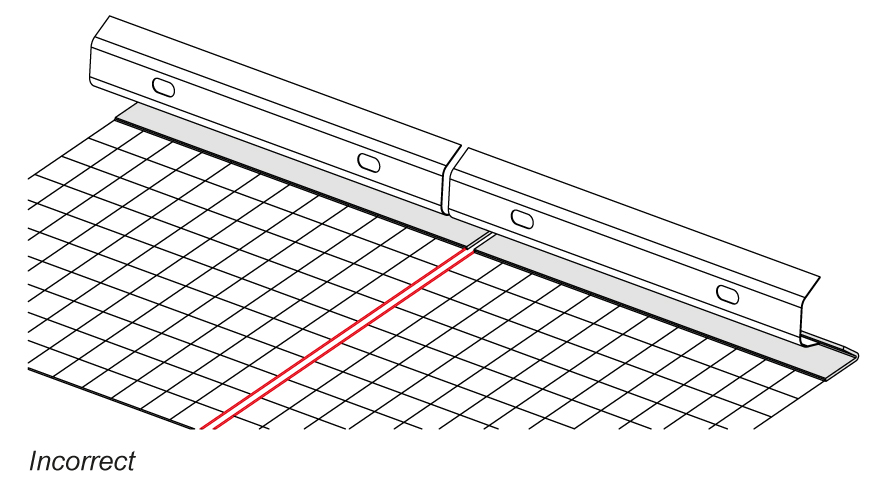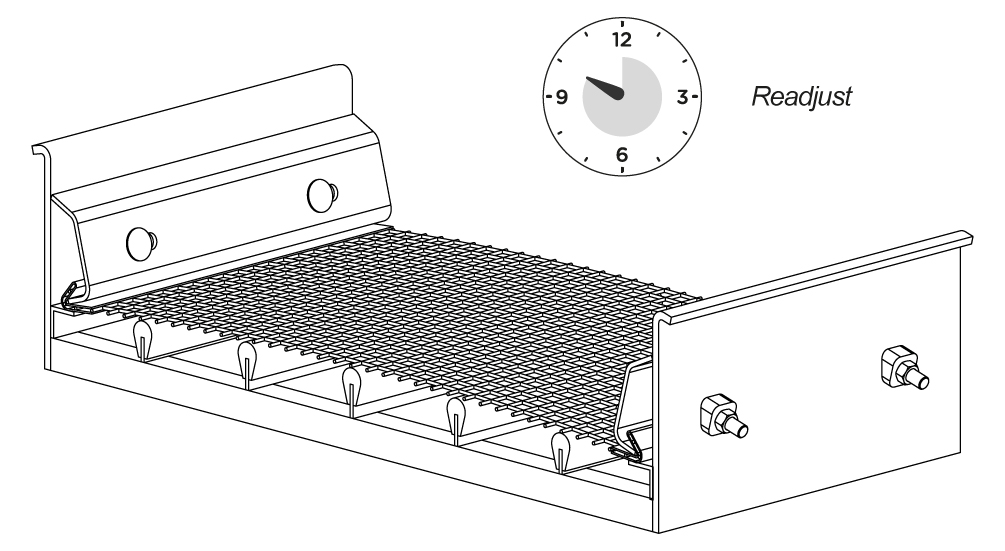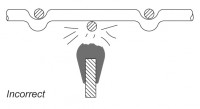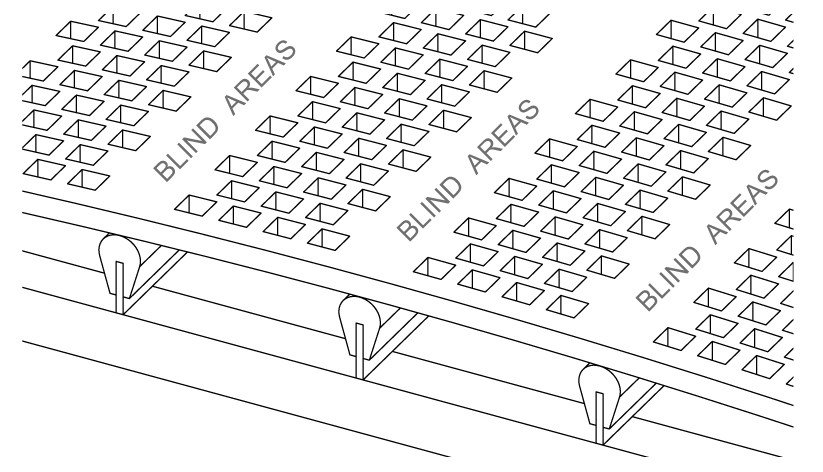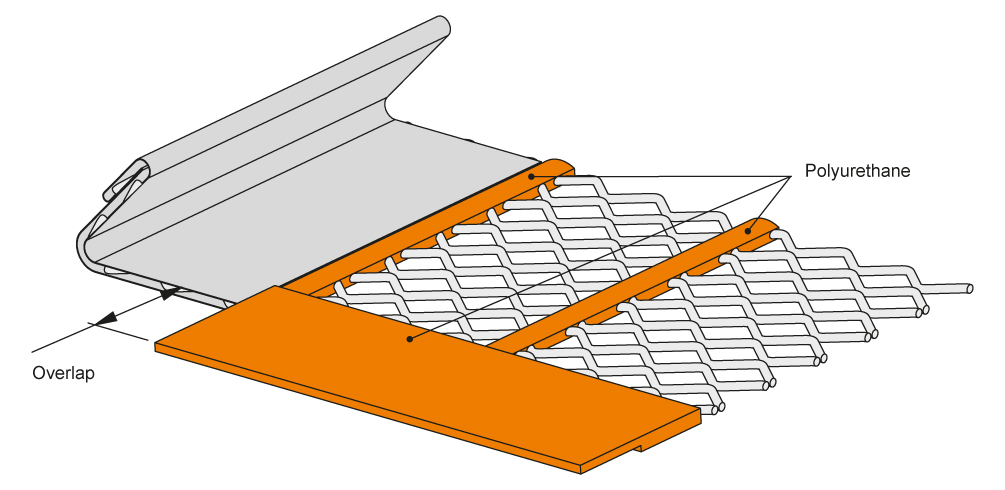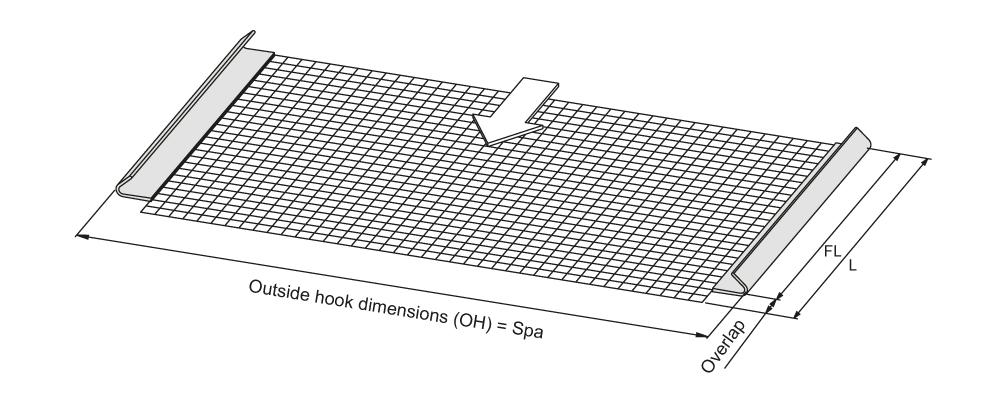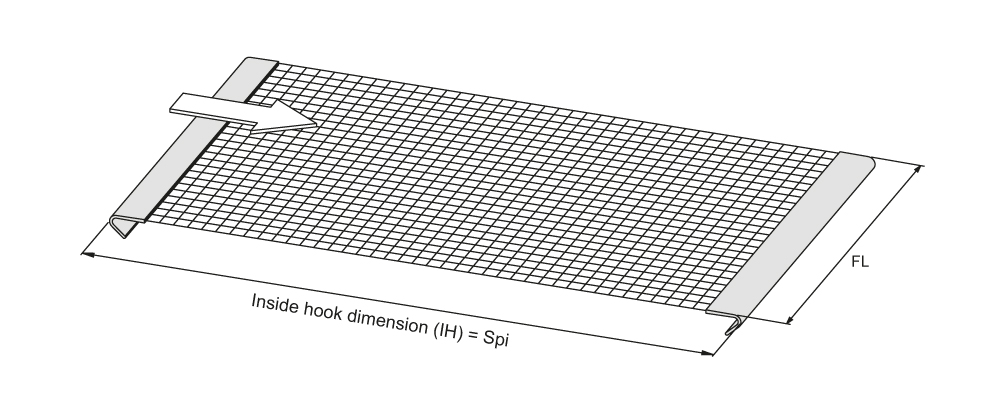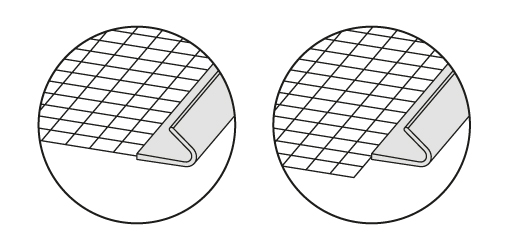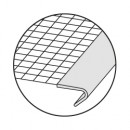With whatever screening media you are using, make sure that the screen wears out and does not break. If the screen breaks see where it breaks.
- Make sure to spread the material feed evenly to the full width of the screen bed in order to use the complete screening surface of the deck.
- Reduce feed height to avoid high impact on the screening media.
- Use the correct screening media, you may want to use at the feed end perforated plates, rubber or polyurethane that have a higher resistance to high impact and abrasion.
- Check that the screen is fitted correctly and at the correct tension and re-check this at regular intervals. This is the main cause of premature screen failure. If the screen is loose it will be vibrating and banging the support bars, creating micro fractures along the support bar that will result in screen damage. Also make sure to allow enough space (H) on both sides of the screen to tighten it symmetrically, the hook of the screen should never touch the machine’s side.
- Check the correct position of the side plates one side plate on one screen, so that there is an even tension on the screen. If one side plate is tensing two screens, the screens will never be tensed correctly.
- When tightened, the mesh should form a single body with the deck, otherwise the mesh will bang into the screen rack and will end up getting broken.
All screens with apertures under 14 mm should have overlap to avoid contamination between screens.
| CLASSIFICATION – Approximate correspondence between PARTICLE SIZE and MESH APERTURE | ||||||||
|---|---|---|---|---|---|---|---|---|
| Particle size mm | Metallic Screen | Doblonda Screen | PU Screen | Rubber Screen | ||||
| Natural | Crushed | Natural | Crushed | Natural | Crushed | Natural | Crushed | |
| 1 | 1,12 | 1,25 | 1 | 1,2 | – | – | – | – |
| 1,25 | 1,4 | 1,6 | 1,3 | 1,5 | – | – | – | – |
| 1,6 | 1,8 | 2 | 1,75 | 2 | – | – | – | – |
| 2 | 2,24 | 2,5 | 2,2 | 2,5 | – | – | – | – |
| 2,5 | 2,8 | 3,15 | 2,5 | 3 | – | – | – | – |
| 3,5 | 3,55 | 4 | 3,3 | 3,5 | – | – | – | – |
| 4 | 4,5 | 5 | 4,2 | 4,5 | 5 | 5,6 | 5,5 | 6,3 |
| 5 | 5,6 | 6,3 | 5,5 | 6 | 6,3 | 7,1 | 6,5 | 7,5 |
| 6,5 | 7,1 | 8 | 7 | 7,5 | 7,1 | 8,5 | 7,5 | 8,5 |
| 7,1 | 8 | 9 | 7,5 | 8 | 8,5 | 9,5 | 8,5 | 9,5 |
| 8 | 9 | 10 | 9 | 10 | 9,5 | 10,5 | 9,5 | 10,5 |
| 9 | 10 | 11,2 | 10 | 11 | 10,5 | 11,5 | 11 | 12 |
| 10 | 11,2 | 12,5 | 11 | 12 | 12 | 13 | 12,5 | 13,5 |
| 11,2 | 12,5 | 14 | 12 | 13 | 13,5 | 14,5 | 14,5 | 15,5 |
| 12,6 | 14 | 15 | 14 | 15 | 14,5 | 16 | 16 | 17 |
| 14 | 16 | 17 | 15 | 16 | 16,5 | 18 | 18 | 19 |
| 16 | 18 | 19 | 18 | 19 | 18,5 | 20 | 20 | 21 |
| 18 | 20 | 21 | 20 | 21 | 20 | 23 | 23 | 24 |
| 20 | 22 | 23 | 22 | 23 | 22,4 | 25 | 25 | 26 |
| 22,4 | 24 | 25 | 24 | 25 | 25 | 28 | 27 | 29 |
| 25 | 27 | 28 | 27 | 28 | 28 | 31,5 | 31,5 | 33,5 |
| 28 | 30 | 31,5 | 30 | 31,5 | 31,5 | 35,5 | 35 | 37 |
| 31,5 | 34 | 35,5 | 34 | 35,5 | 35,5 | 38 | 38 | 40 |
| 35,5 | 38 | 40 | 38 | 40 | 38 | 40 | 43 | 45 |
| 40 | 43 | 45 | 43 | 45 | 42 | 45 | 50 | 52 |
| 45 | 48 | 50 | – | – | 48 | 50 | 55 | 57 |
| 50 | 53 | 56 | – | – | 53 | 56 | 60 | 62 |
| 63 | 65 | 70 | – | – | 65 | 68 | 74 | 76 |
| 80 | 85 | 90 | – | – | 85 | 90 | 98 | 100 |
| 100 | 105 | 112 | – | – | 105 | 112 | 115 | 120 |
| 120 | – | – | – | – | – | – | 135 | 140 |
| 150 | – | – | – | – | – | – | 170 | 175 |
Note: The data shown is recommended for dry screening at an inclination of 12º to 18º




